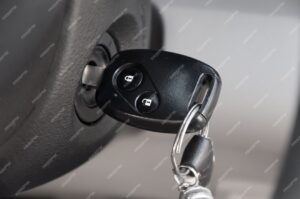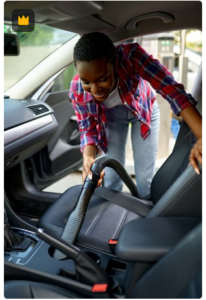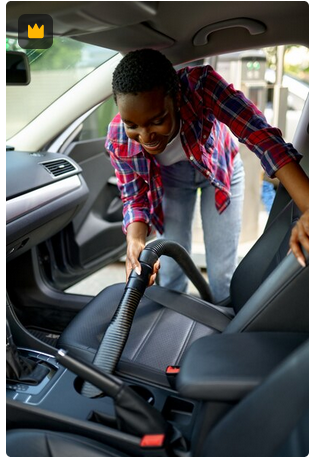Navigating the Storm: Essential Safety Tips for Driving in Heavy Rain
Driving can be a challenging task in normal weather conditions, but when heavy rain strikes, it can become downright dangerous. Poor visibility, slippery roads, and the risk of hydroplaning can make even the most experienced driver feel uneasy. But don’t worry, with the right knowledge and preparation, you can navigate through the storm safely. In this post, we’ll cover essential safety tips to help you drive confidently in heavy rain. From checking your tires and brakes to adjusting your speed and using your headlights correctly, we’ll give you all the information you need to stay safe on the road. So, buckle up and get ready to become a pro at driving in heavy rain!
1. Understanding the risks of driving in heavy rain
When it comes to driving in heavy rain, understanding the risks involved is crucial for ensuring your safety on the road. Heavy rain can dramatically reduce visibility, create slippery road conditions, and increase the likelihood of hydroplaning. It’s important to recognize that driving in these conditions requires extra caution and preparation.
One of the primary risks of driving in heavy rain is reduced visibility. Rainfall can significantly impair your ability to see the road ahead, other vehicles, and important traffic signs or signals. This makes it difficult to anticipate and react to potential hazards. It’s essential to keep a safe distance between your vehicle and the one in front of you, allowing enough time to brake or maneuver if necessary.
Another risk to consider is the increased likelihood of hydroplaning. When rainwater accumulates on the road surface faster than it can be dispersed, it creates a layer of water between your tires and the pavement. This can lead to loss of traction, causing your vehicle to slide or skid. To minimize the risk of hydroplaning, it’s important to reduce your speed, avoid sudden braking or acceleration, and ensure that your tires have sufficient tread depth.
Additionally, heavy rain can make the road surface slippery, especially when mixed with oil or other substances. This can significantly impact your vehicle’s braking distance, making it harder to stop quickly. To mitigate this risk, maintain a moderate speed and allow for additional braking distance. It’s also crucial to ensure that your vehicle’s tires are properly inflated and in good condition to maximize traction.
Overall, understanding the risks associated with driving in heavy rain is the first step in ensuring your safety on the road. By being aware of reduced visibility, the risk of hydroplaning, and slippery road conditions, you can take appropriate measures to adjust your driving behavior and minimize potential hazards. Remember, it’s always better to err on the side of caution and prioritize your safety when navigating through stormy weather.
2. Preparing your vehicle for rainy conditions
Before hitting the road during heavy rain, it’s crucial to ensure that your vehicle is properly prepared to handle the challenging conditions ahead. Taking the time to make a few necessary adjustments and checks can significantly improve your safety and minimize the risk of accidents. Here are some essential tips to prepare your vehicle for driving in heavy rain:
- Check your tires: Proper tire maintenance is crucial for optimal traction on wet roads. Ensure that your tires are properly inflated and have sufficient tread depth. Bald or worn-out tires can increase the chances of hydroplaning, making it difficult to control your vehicle.
- Replace windshield wipers: Clear visibility is paramount when driving in heavy rain. Inspect your windshield wipers and replace them if they are worn out or leaving streaks on the windshield. Good wipers will help maintain a clear view of the road, allowing you to react promptly to any potential hazards.
- Test your headlights and taillights: Rainy conditions often reduce visibility, making it essential to have properly functioning headlights and taillights. Test all your lights to ensure they are working correctly, and replace any bulbs that are burned out. This will not only help you see the road ahead but also make your vehicle more visible to other drivers.
- Check your brakes: Wet roads require more stopping distance, so it’s crucial to have well-functioning brakes. If you notice any unusual noises or vibrations when applying the brakes, have them inspected by a professional. Additionally, make sure your brake lights are working correctly to alert other drivers when you are stopping.
- Inspect your windshield and wipers fluid levels: A clean windshield is essential for visibility during heavy rain. Check your windshield washer fluid levels and ensure that the nozzles are not clogged. Fill up the reservoir if needed and consider using a high-quality washer fluid that effectively repels water for better visibility.
- Ensure proper functioning of defogging and defrosting systems: Rainy conditions can cause windows to fog up, reducing visibility. Check that your vehicle’s defogging and defrosting systems are working correctly. This will help keep the interior windows clear and prevent fogging.
By following these steps and ensuring your vehicle is well-prepared for rainy conditions, you can significantly enhance your safety on the road. Remember, taking the time to make these checks and adjustments can go a long way in preventing accidents and ensuring a smooth and secure driving experience, even in the midst of a heavy downpour.
3. Ensuring proper visibility with windshield wipers and defogging
When it comes to driving in heavy rain, maintaining proper visibility is absolutely crucial for the safety of yourself and others on the road. One of the most important aspects of this is ensuring that your windshield wipers are in good condition and functioning properly.
Over time, windshield wiper blades can wear out and become less effective at clearing water from the windshield. This can significantly impair your visibility, especially during heavy rainstorms. It’s a good idea to regularly inspect your wiper blades for any signs of damage or deterioration, such as cracks or fraying. If you notice any issues, it’s important to replace them as soon as possible.
Additionally, it’s important to make sure that your windshield is properly defogged during heavy rain. Fogging on the inside of the windshield can occur due to the difference in temperature between the inside and outside of the vehicle. To prevent this, you can use your vehicle’s defogger setting, which directs warm air onto the windshield to clear the fog. It’s a good idea to familiarize yourself with your vehicle’s defogging system and know how to use it effectively.
In some cases, heavy rain can create a situation where even the best windshield wipers and defogging methods may not provide adequate visibility. During these times, it’s important to exercise caution and adjust your driving accordingly. Slowing down, increasing the distance between your vehicle and the one in front of you, and using your headlights can all help to improve visibility and reduce the risk of accidents.
By ensuring that your windshield wipers are in good condition and knowing how to effectively defog your windshield, you can greatly enhance your visibility while driving in heavy rain. These simple yet essential safety tips will help you navigate through the storm with confidence and keep yourself and others safe on the road.
4. Adjusting your driving habits for wet roads
When facing heavy rain while driving, it’s crucial to adjust your driving habits to ensure your safety on the road. The first step is to slow down and maintain a safe speed. Wet roads decrease traction and increase the risk of hydroplaning, so reducing your speed allows for better control of your vehicle.
Maintaining a safe following distance is equally important. Keep a greater distance between your vehicle and the one ahead to provide ample time to react and brake, as braking distances increase on wet surfaces. This extra space also helps prevent potential accidents caused by sudden stops or skidding.
Another essential tip is to avoid sudden maneuvers or aggressive driving. Smooth and gradual actions, such as accelerating, braking, and turning, are key to maintaining control on wet roads. Abrupt movements can lead to loss of control or skidding, potentially causing accidents.
Additionally, ensure your vehicle’s headlights are on, even during daylight hours of heavy rain. This increases your visibility to other drivers, making it easier for them to spot your vehicle in adverse weather conditions. It also helps you see the road ahead more clearly.
Lastly, be cautious of puddles and standing water on the road. These can hide potential hazards, such as potholes or debris, which may damage your vehicle or cause you to lose control. If possible, try to avoid these areas or drive through them slowly and steadily.
By adjusting your driving habits for wet roads, you significantly reduce the risks associated with driving in heavy rain. Remember, safety should always be your top priority, so take the necessary precautions and stay alert while navigating stormy weather conditions.
5. Maintaining a safe following distance
Maintaining a safe following distance is crucial when driving in heavy rain. In wet conditions, the stopping distance of a vehicle increases significantly, making it essential to leave ample space between you and the vehicle ahead. The general rule of thumb is to stay at least three seconds behind the car in front of you, but in heavy rain, it’s advisable to increase that distance to at least four or five seconds.
By maintaining a safe following distance, you allow yourself more time to react to sudden stops or changes in traffic ahead. This additional time can be the difference between a safe stop and a collision. It’s important to remember that sudden braking on wet roads can lead to hydroplaning, where your tires lose contact with the road surface, resulting in a loss of control.
To determine the appropriate following distance, choose a fixed object on the road ahead, such as a sign or a lamppost. When the vehicle in front of you passes that object, start counting “one Mississippi, two Mississippi, three Mississippi.” If you reach the object before completing the count, you’re following too closely and should increase your distance.
In heavy rain, visibility is reduced, and hydroplaning becomes a real risk. By maintaining a safe following distance, you provide yourself with the necessary time and space to react to changing road conditions, ensuring a safer driving experience for yourself and those around you. Remember, it’s better to arrive at your destination a little later than to risk your safety by driving too closely in hazardous weather conditions.
6. Avoiding hydroplaning and skidding on wet surfaces
When driving in heavy rain, one of the biggest challenges is maintaining control of your vehicle on wet surfaces. Hydroplaning and skidding can happen unexpectedly, leading to dangerous situations on the road. To avoid these risks, there are several safety tips you should keep in mind.
First and foremost, it’s important to reduce your speed when driving in heavy rain. Wet roads reduce tire traction, making it easier for your vehicle to lose control. Slowing down allows your tires to maintain better contact with the road surface, reducing the chances of hydroplaning or skidding.
Additionally, maintaining a safe following distance is crucial. The increased braking distance on wet roads means that you need more time to stop your vehicle. By keeping a safe distance from the vehicle in front of you, you give yourself ample time to react and avoid sudden braking, which can lead to skidding.
Another effective measure to prevent hydroplaning is to ensure that your tires are properly inflated and have good tread depth. Tires with low air pressure or worn-out treads are more prone to losing traction and sliding on wet surfaces. Regularly check your tire pressure and consider replacing tires that are excessively worn to improve your vehicle’s grip on the road.
When encountering standing water on the road, it’s important to avoid driving through it if possible. Even relatively shallow water can cause your vehicle to hydroplane, leading to a loss of control. If you must drive through standing water, proceed with caution and reduce your speed significantly.
Lastly, it’s crucial to remain calm and composed if your vehicle starts to hydroplane or skid. Avoid making sudden movements, such as slamming on the brakes or jerking the steering wheel. Instead, gently ease off the accelerator and steer in the direction you want to go. This can help regain control of your vehicle and prevent further sliding.
By following these essential safety tips, you can navigate through heavy rain with confidence and reduce the risk of hydroplaning or skidding. Remember, your safety and the safety of others on the road should always be your top priority when driving in challenging weather conditions.
7. Handling emergencies and hazardous situations during heavy rain
Handling emergencies and hazardous situations during heavy rain requires quick thinking and proper preparation. While it’s essential to practice safe driving techniques at all times, it becomes even more crucial during inclement weather conditions. Here are some tips to help you navigate through emergencies and stay safe on the road when facing heavy rain.
- Maintain a safe distance: Increase your following distance to at least four seconds from the vehicle ahead of you. This extra space allows for better visibility and allows you more time to react to sudden changes in traffic.
- Stay alert and focused: Keep your full attention on the road and avoid any distractions. Heavy rain can significantly reduce visibility, so it’s important to be extra vigilant and watch out for any sudden obstacles or hazards.
- Avoid hydroplaning: Hydroplaning occurs when your vehicle’s tires lose contact with the road due to water buildup. To prevent this, reduce your speed and avoid sudden braking or accelerating. If you do start to hydroplane, gently ease off the accelerator, and steer straight until you regain traction.
- Use your headlights: Turn on your headlights, even during the day, to increase your visibility to other drivers. This not only helps you see the road ahead but also allows other vehicles to spot you more easily.
- Be cautious of standing water: Avoid driving through standing water as it can be deeper than it appears, leading to potential loss of control or damage to your vehicle. If you cannot avoid it, slow down and drive through cautiously, keeping a steady speed to prevent water from splashing into your engine.
- Respond to skids appropriately: If your vehicle starts to skid, remain calm and avoid overcompensating. Gently steer in the direction you want to go and avoid slamming on the brakes, as this can cause further loss of control.
- Stay updated on weather conditions: Before heading out, check the weather forecast and road conditions. If the conditions are severe, consider delaying your trip or finding an alternative route if possible.
Remember, your safety and the safety of others on the road should always be the top priority. By following these tips and using common sense, you can navigate through emergencies and hazardous situations during heavy rain with confidence.
8. Knowing when to pull over and wait out the storm
When it comes to driving in heavy rain, knowing when to pull over and wait out the storm is crucial for your safety. Sometimes, the rain can become so intense that it significantly impairs visibility, making it difficult to see the road and other vehicles around you. In such situations, it is important to prioritize your safety and the safety of others on the road.
If you find yourself in heavy rain where visibility is extremely poor, it is recommended to find a safe place to pull over and wait until the storm subsides. Look for designated rest areas, parking lots, or gas stations where you can seek shelter from the rain. Avoid stopping on the shoulder of the road unless it is an absolute emergency, as this can be dangerous and increase the risk of accidents.
Once you have safely pulled over, make sure to turn on your hazard lights to alert other drivers of your presence. It is also a good idea to keep a safe distance from the road, as passing vehicles may generate splashes of water that could affect your visibility or even cause damage to your vehicle.
While waiting out the storm, use this time to check weather updates and road conditions to determine when it is safe to continue your journey. Keep an eye out for any flood warnings or road closures in your area. If necessary, contact local authorities or your destination to get the latest information.
Remember, it’s better to be safe than sorry. By knowing when to pull over and wait out the storm, you can ensure your safety and minimize the risks associated with driving in heavy rain.
9. Additional safety precautions for night-time driving in the rain
Driving in heavy rain can be challenging, and the difficulty increases even further when it comes to night-time driving. Reduced visibility and glare from oncoming headlights can make it even more dangerous. However, with some additional safety precautions, you can navigate through the storm and reach your destination safely.
First and foremost, ensure that your vehicle’s headlights are in proper working condition. Clean them regularly and adjust them correctly to ensure optimal visibility. Keep your headlights on low beam to avoid blinding other drivers and to reduce the glare reflected back at you.
It is crucial to slow down and maintain a safe distance from the vehicle in front of you. Wet roads can significantly increase the stopping distance, so it is essential to allow for extra time and space to react and brake if needed. Driving at a slower speed will also help to prevent hydroplaning, which occurs when your tires lose contact with the road surface due to water buildup.
Another important safety precaution is to avoid using cruise control during night-time driving in the rain. Cruise control can reduce your ability to quickly adjust your speed based on changing road and weather conditions. By keeping full control of your vehicle, you can better respond to any sudden obstacles or hazards that may arise.
Additionally, make sure your windshield wipers are in good condition and working effectively. Replace worn-out wiper blades to maintain clear visibility during heavy rain. Consider applying a water-repellent coating to your windshield to help improve visibility and reduce the need for constant wiper usage.
Finally, stay alert and focused while driving in the rain at night. Avoid distractions such as using your phone, adjusting the radio, or engaging in any other activities that may divert your attention from the road. Keep both hands on the steering wheel and be prepared for sudden changes in road conditions.
By following these additional safety precautions, you can enhance your night-time driving experience in heavy rain. Remember, your safety and the safety of others on the road should always be your top priority.
10. Conclusion: Staying safe and confident on the road in heavy rain
In conclusion, staying safe and confident on the road during heavy rain is of paramount importance. By following the essential safety tips outlined in this article, you can minimize the risks associated with driving in such challenging weather conditions.
Remember to always check the weather forecast before heading out and, if possible, postpone your trip if heavy rain is expected. If you must drive, ensure that your vehicle is properly maintained, with working windshield wipers, good tire tread, and functioning brake lights.
When driving in heavy rain, reduce your speed and increase the distance between your vehicle and the one in front of you. This will allow for better visibility and ample time to react to any sudden changes or hazards on the road.
Maintain a firm grip on the steering wheel and avoid sudden maneuvers or hard braking. Smooth and controlled movements are key to maintaining control of your vehicle on wet roads.
Be vigilant for areas of standing water and avoid driving through them whenever possible. Just a few inches of water can cause your vehicle to lose traction and hydroplane, potentially leading to a loss of control.
Use your headlights, even during the day, to improve visibility for yourself and other drivers. This will make it easier for others to see you as well, reducing the risk of accidents.
Lastly, if conditions become too severe or you feel uncomfortable driving in heavy rain, find a safe place to pull over and wait until the weather improves. Your safety should always be the top priority.
By adhering to these safety tips and exercising caution, you can navigate the storm and arrive at your destination safely. Remember, it’s better to be a little late than to risk your life and the lives of others on the road. Stay safe, stay confident, and drive responsibly in heavy rain.











+ There are no comments
Add yours